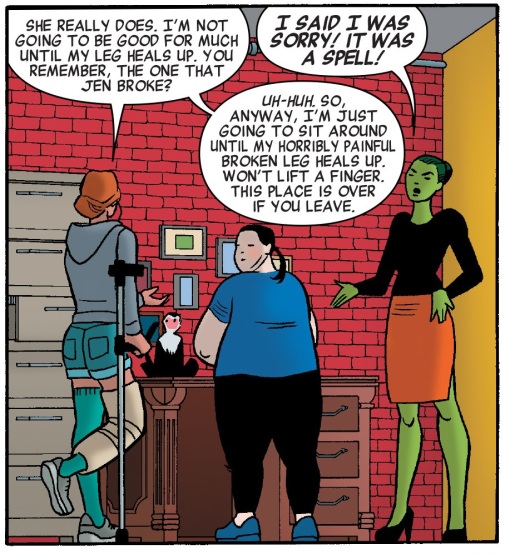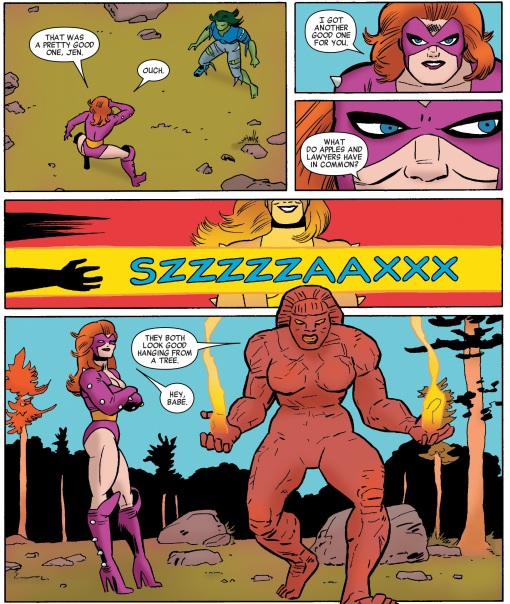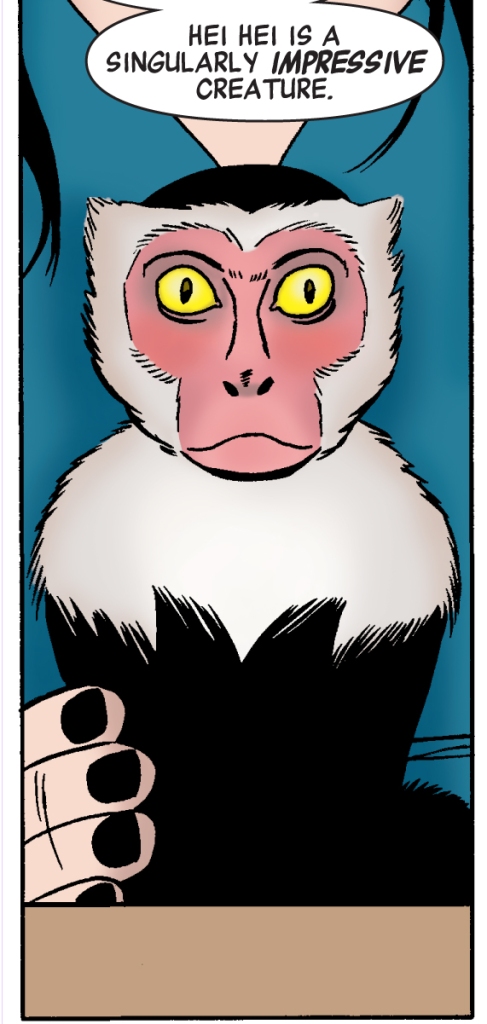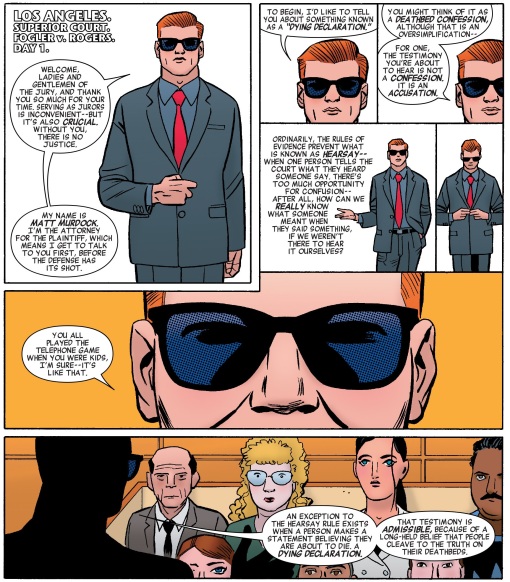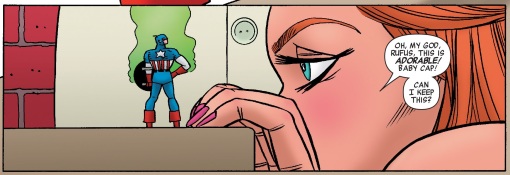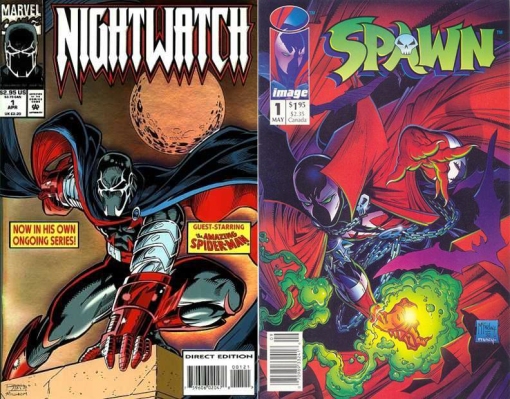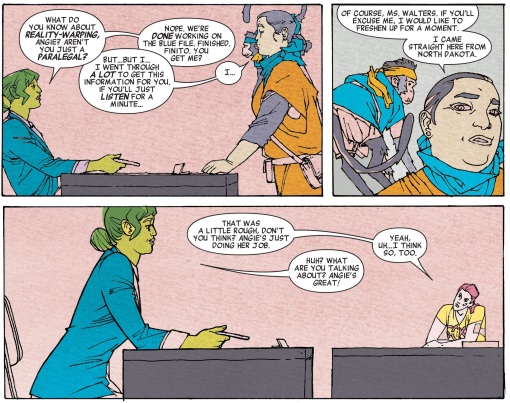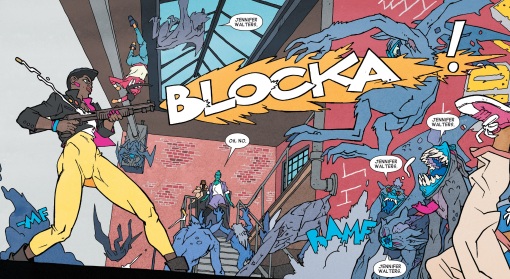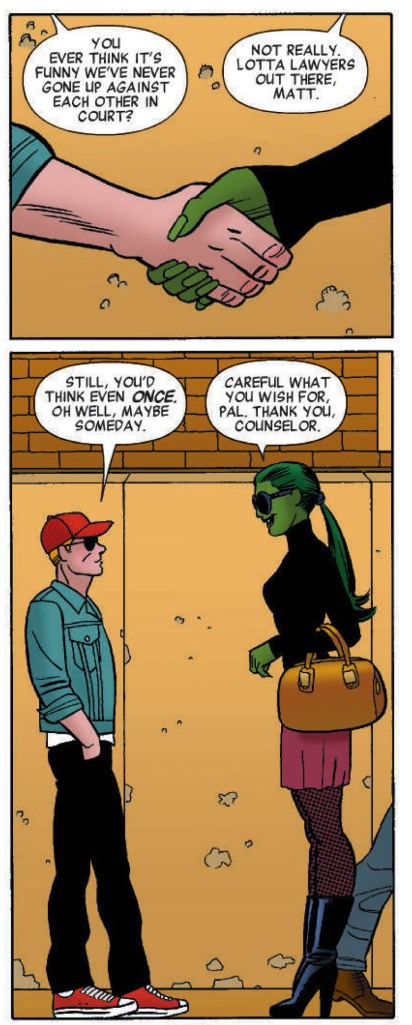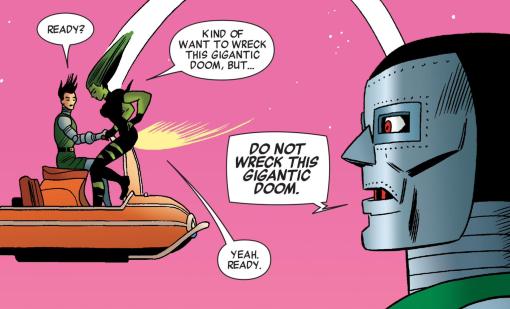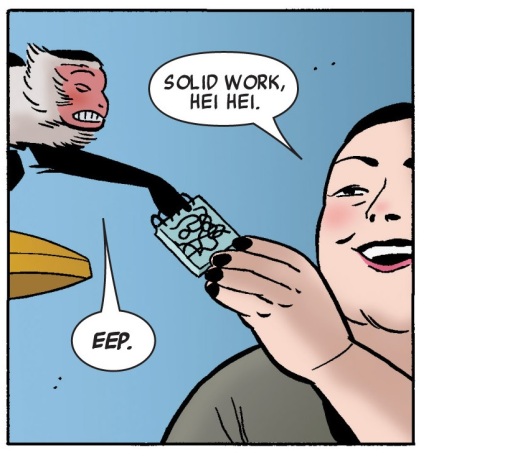(Obligatory intro text paragraph – feel free to skip down to the non-italic text if you’ve already been reading these posts.)
This is the last of twelve essays I’ve written, one per day leading up to the release of She-Hulk #12, the final issue in the current run of the title, on February 18. The idea was to look at each issue a bit more in-depth before we got to that last one.
If you haven’t read She-Hulk, but you’d like to, you can get the trade for issues 1-6 here, buy all the issues digitally here or hit up your local comic shop.
You may have noticed that this post is going up on Thursday, February 19, while the final issue of She-Hulk actually hit shelves yesterday, on the 18th. I decided to wait to post this for two reasons. First, I really, really wanted to finish the script for the fifth issue of [redacted] yesterday, and it took longer than I expected. That’s a tricky project.
Second, this post will feature spoilers, as have all of my little writeups, and I wanted to give people a chance to find the issue and read it before they accidentally stumble across my thoughts here. I actually went to three shops looking for a copy before I could find one – the first two places were sold out, which seems like a nice thing.
Anyway, issue 12 – the ride’s over for now. Let’s talk about this last installment.
Lots to wrap up in this issue – I needed to explain all of the little bits and pieces in the Blue File mystery in a satisfying way, figure out how to get some punching going, say goodbye to these characters (for now) and work in a Howard the Duck cameo:
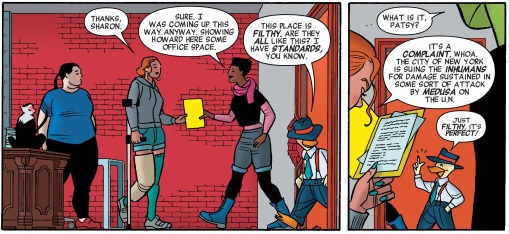 Turns out that good ol’ Howard is taking office space in Jen’s IdeaHive building down in DUMBO, which we’ll see in Chip Zdarsky and Joe Quinones’ Howard the Duck series, starting any minute from Marvel. I love that so much. (Also, I’ve read the first issue, and it’s pretty darn delightful.)
Turns out that good ol’ Howard is taking office space in Jen’s IdeaHive building down in DUMBO, which we’ll see in Chip Zdarsky and Joe Quinones’ Howard the Duck series, starting any minute from Marvel. I love that so much. (Also, I’ve read the first issue, and it’s pretty darn delightful.)
If you want to see more of Jen, Patsy, Angie and Hei Hei, that’s the first place to look.
Anyway, back to the list of to-dos for this issue. You may note that there’s a big item missing from that list – a good explanation of what the hell is up with Angie and Hei Hei. I was reading some reviews of this issue (I try not to read reviews, but I am only human, and I really wanted to see what folks thought of this one,) and one referred to Angie as a sort of “paralegal Mary Poppins,” offering her services to attorneys in need across the Marvel Universe.
That’s not exactly it, but that made me laugh, so for now, let’s say that’s what Angie and Hei Hei are, until I get an opportunity to tell their story in more detail. The truth is, I felt like I didn’t have enough space here to do their story justice. It deserves at least a few issues, and I didn’t want to shortchange them with a few throwaway lines at the end of this story. Whether or not I get to tell that story… we’ll see. I know exactly when and how I would like to do it, but of course that will depend on many other factors. We’ll get to that.
For now, all you get is that apparently she can do this:
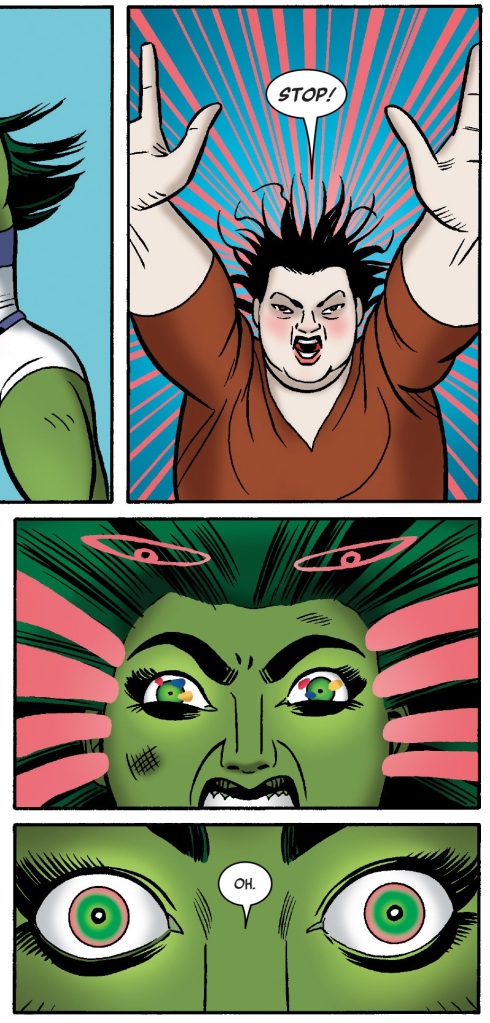 I hope readers weren’t too bummed that I didn’t fully explain Angie here, but I felt strongly that if I couldn’t do it right, I didn’t want to do it at all. If the stars never align for me to write it the way I want to, I’ll make sure the truth gets out eventually, either here or somewhere like it.
I hope readers weren’t too bummed that I didn’t fully explain Angie here, but I felt strongly that if I couldn’t do it right, I didn’t want to do it at all. If the stars never align for me to write it the way I want to, I’ll make sure the truth gets out eventually, either here or somewhere like it.
I loved writing the flashback sequence that opened the issue – it’s always fun to go back and use older versions of characters.
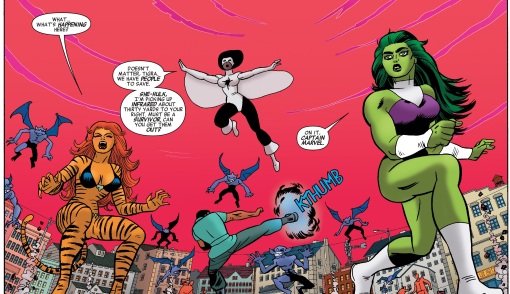 I’ve always loved that Captain Marvel costume in particular. Such a great design.
I’ve always loved that Captain Marvel costume in particular. Such a great design.
By this point you’ve (hopefully) read the issue, so you know what happened – Nightwatch executed an in-story retcon to change the Marvel U’s perception of him from the villain Nighteater to the hero Nightwatch. He did so by murdering a town’s worth of people and using their “mental energy” to power a spell that would rewrite reality.
Dr. Druid was the magician behind it – one interesting note that I haven’t heard about yet, although I thought I would – Dr. Druid is technically a hero himself. So what the hell is he doing here, working with villains like Nighteater, Shocker and Vibro? Well, it turns out Dr. Druid’s continuity includes some pretty tough times. At least once, he was possessed by an evil spirit of a sort, after which none of the other heroes trusted him all that much. He was forced to take odd jobs to survive, some of which were for bad guys – and this is something that happened during that phase.
Nighteater is a new creation for this series. I actually thought he came off pretty badass for a guy we only see for a few pages:
That’s one hell of a cool design and color scheme – once again, kudos to Javier and Muntsa. I actually liked Nighteater more than Nightwatch – at least Nighteater is honest about who he is (for a while.) Nightwatch is just a lying liar.
I’d like to point you to a review I read today from the folks at Retcon-Punch, a site I’ve come to love for their very sharp reviews and discussion not just of my books, but many other titles as well. They did a writeup on this issue as well as what they thought it meant in context of the series as a whole that really nails a lot of the themes I was trying to work with here. You can read it here, if you want to. Rather than me go through all of that here, I thought I could just piggyback on their hard work. You know me – nothing like a quick, easy shortcut.
I hope the whole thing works well when you read it as a unit – these mysteries are hard to build, and sometimes you forget something you intended to do when you laid in a clue in an issue you wrote nine months before. But that said, what you see is pretty much what I was planning from the beginning. (One funny thing, though – the D-list Marvel hero I was originally going to retcon wasn’t Nightwatch. It was determined that using the one I originally wanted would hypothetically invalidate a bunch of Fantastic Four stories, or at least put them in a strange and not necessarily desirable light. I think Nightwatch worked out really well, but the other character would have been fun too. And no, I won’t tell you who it was. The FF mention is enough of a clue.)
Favorite panel: This seems like the perfect opportunity to make special mention of an element of this book I haven’t talked about enough to date – Kevin Wada’s unbelievable covers. His work helped to lock in the title’s vibe – it’s not a cheesecake book, it’s about a kickass icon. The cover for this last issue might have been my favorite out of all 12 (including the amazing triptych covers for 8-10), and even though it’s technically not a panel, I think we can stretch the rules just this once:
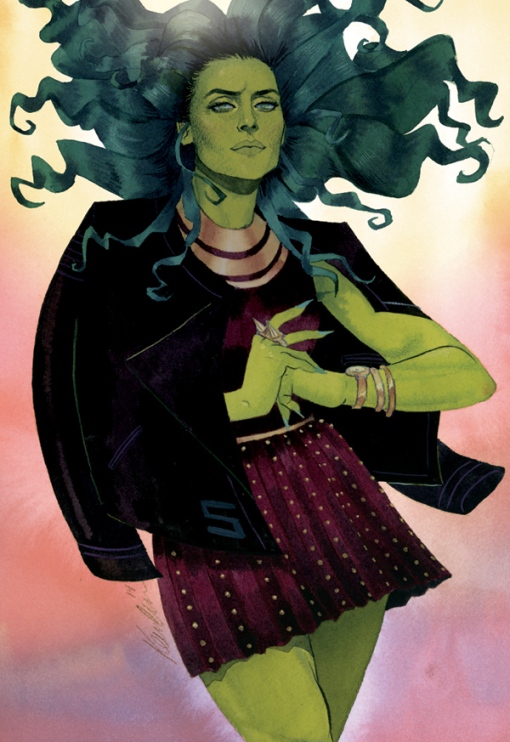 Look at her expression! Kevin has promised to paint me a Jen I can stick on my wall, but he is not exactly the least busy guy in the world. Hopefully I’ll get one eventually.
Look at her expression! Kevin has promised to paint me a Jen I can stick on my wall, but he is not exactly the least busy guy in the world. Hopefully I’ll get one eventually.
Favorite character: Jen Walters, especially in this panel:
And that, as they say… is that. I will miss working on this series immensely – everything I said in the little note that ends the physical copy of this issue is completely true. Will we do more? I can’t announce anything – there’s nothing to announce – but the door remains open. If my schedule permits and Marvel’s schedule permits, then hopefully we’ll get that season 2. In the meantime… I’d say keep your eyes on Wolverines, the weekly series I’m writing. Especially around the beginning of April.
Thank you all for reading, both these posts and the series. This has been a fair amount of work to put together, but I’ve enjoyed the look back. As always, if you have questions about this issue, or anything at all, you can reach me on Twitter (www.twitter.com/charlessoule) or via the email form at www.charlessoule.com.

